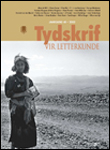Muses van die modder: Die tango en die kabaret
DOI:
https://doi.org/10.4314/tvl.v40i1.53623Keywords:
cabaret, tango, art songsAbstract
The point of departure for this article is the striking commonalities shared by the tango and the cabaret. As the title suggests, both genres have colourful, yet modest origins, indebted to those, like prostitutes and criminals, on the margins of society. The (cabaret) chanson is often referred to as the "art song (kunslied) of the street and cafe", and the same holds for the tango. The difference between the cabaret chanson and the tango lies therein that sophisticated writers and composers developed cabaret, from the time of Aristide Bruant till today. From the beginning the creators of the cabaret were sympathetic to the marginalized. The argot of the characters in Bruant's chansons was descriptive of their surroundings, be it a harbour or a prison. But the cabaret chanson and the tango do not only deal with socio-political concerns. Other, equally important, themes are eroticism, the ecstasy of love, and above all, disenchantment with love. Therefore the undercurrents of chansons and tangos often tend towards the melancholic; the words, "melancholy" and "tristesse", repeatedly occur in these texts. In both cabaret and tango texts reference is often made to cabaret localities like cafe's or bars and the word "brothel" is frequently used. The creator of the so-called nuevo tango, Astor Piazzolla, summarised the history of tango in his composition Histoire du Tango as follows: "Brothel (1900)", "Cafe (1930)", "Nightclub (1960)", and "Concert hall (presently)". Occasionally, cabaret was upgraded to the concert halls and as with the tango, was acclaimed by the intellectuals. However, it should not be forgotten that both genres started out subversively, and that this trait must be retained, if these expressions were to remain true to their nature.
Downloads
References
...
Downloads
Published
Issue
Section
License
Copyright (c) 2003 Tydskrif vir Letterkunde

This work is licensed under a Creative Commons Attribution-ShareAlike 4.0 International License.


 https://orcid.org/0000-0001-6465-6584
https://orcid.org/0000-0001-6465-6584


.png)